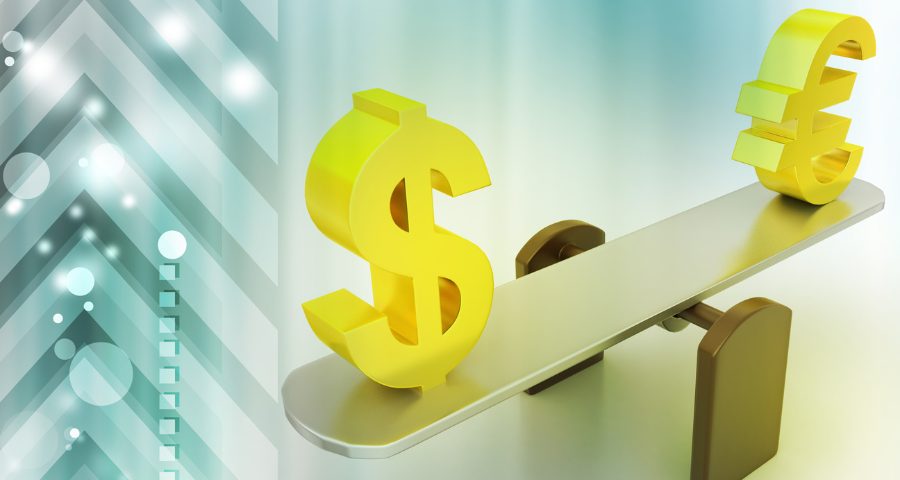Everything you need to know about exchange rates
When it comes to exchange rates, there is a lot to learn to fully understand how they work. However, once you grasp the basics, it can be much easier to monitor and predict changes in the market. In this blog post, we will cover everything you need to know about exchange rates. You can be informed better when making decisions about your finances.
What is the exchange rate?
First, let’s start with the definition. “Exchange Rates” is a term that commonly refers to the ratio of foreign currencies to the currency of the country where you’re living. It’s simply the number of units that I need from one currency to buy a unit of another currency.
In Australia, the Australian Dollar (also represented by AUD) is the local currency. There is one official exchange rate at any point in time, which changes 24/7.
Exchange rates vary due to numerous global economic factors which are out of our control. In some country’s the Central Bank may officially set the exchange rate of their currency in relation to a particular currency such as the US dollar (or USD).
Smaller countries often will do this to avoid their currency being “devalued” or reduced in value. In many cases however, a country’s Exchange Rate will be set by the market, also known as “floating” the currency. In this way the market (or the rest of the world) determines the value of one country’s currency.
There are many reasons for why a Central Bank may want to set its currency as opposed to allowing the market to determine its value. The reasons are way too complex for this blog today!
I know that’s a lot to take in, but bear with me…
Now that we have a basic understanding of an exchange rate lets look at how they’re determined. Many factors go into setting exchange rates but the most important is the demand for each currency. The more people are looking to buy a particular currency, the higher its value will be. This is because there will be more competition among buyers and sellers, driving up the price.

The difference between buying and selling rates
Generally, money dealers will provide you with at least two different rates of exchange. A ‘buying rate’ refers to the rate at which you purchase foreign currency from money dealers.
The ‘selling rate’ is the rate at which you’re receiving foreign currency (back) from money dealers. The difference between the money dealer’s buy and sell rates and the official exchange rate. It is usually the profit made by the money dealer from the transaction.
However, as the official exchange rate constantly changes, the buy and sell rate also change proportionally.
What is the mid-market rate?
The mid-market rate is same thing as the official Exchange Rate. Some money dealers use this term as is a way of referencing an exchange rate in relation to the “buying rate” and the “selling rate” as described above. For example some money dealers will quote a “buying rate” or a “selling rate” as a percentage from the Mid-Market rate.
In practice, because a money dealer needs to make profit on a transaction, is not generally possible receive the mid-market rate. Sometimes if you are converting a large amount, you may receive a good rate.
Google for example often quotes the mid-market rate. This can be confusing when sending money because no money dealer can usually provide the mid-market rate.
What to look for in a money dealer exchange rate
Obviously when you are buying or selling foreign currency you want to get the best exchange rate that you can. However, some money dealers may offer drastically “cheap” exchange rates that are below the official rates. Be warned as this could be a signal that something is not right.
When this occurs it is usually because the dealer has too much of one currency and needs to offload it quickly. They are even willing to loose money to do this. Some remittance dealers my also be so desperate to receive a particular currency that they are willing to pay extra for it (by giving a very good “buying” Exchange Rate).
While very rare, some remittance services can offer these “below market rates”. They do this where funds are not physically transferred, but instead are offset by a reserve of funds in one particular payout country.
It is also possible that “below market rates” may be due to illegal activity such as money laundering. Always ensure that your money dealer is registered with AUSTRAC.
Factors that influence exchange rates
In this section, we will discuss the factors influencing exchange rates. These primary factors affect exchange rates and make them change from time to time.
– The first factor is inflation in a country. Inflation is when prices of goods and services increase over time. This means it takes more money to buy the same goods and services as before.
– The second factor is trade deficit. This occurs when a country imports more than it exports. If a country imports more than it exports, its currency will decrease in value because of all the money leaving its borders for other countries to import their goods and services.
– The third factor is interest rates. If interest rates go up, then people will generally borrow less money as they cannot afford higher loan repayments due to the higher interest rates. But, it also means that banks will pay more on cash savings. If a country has high interest rates, people may prefer to hold their cash savings in that currency because they will earn more interest.
While there are other factors such as the economic growth and prosperity within a country, political stability, or simply a desire to live in one particular country over another!
I told you it’s a complex topic but hang in there….
How are International exchange rates set?
The exchange rates for international currencies are determined by the supply and demand market forces for those currencies.
The demand for a currency is primarily determined by the volume of trade conducted in that currency.
If a country trades heavily with other countries, there will be more demand for its money as it will need to be used to purchase goods and services from other countries.
If a country’s currency is being used heavily in international trade, then there will be more supply of that currency, leading to an increase in its value. This means it takes fewer foreign money units to buy one unit of the home country’s money.
Why do exchange rates matter?
Exchange rates matter to Australia’s economy because they influence trade and financial flows between Australia and the rest of the globe.
– Firstly there is a direct effect on the prices of goods and services produced in Australia relative to the costs of goods and services made overseas.
– Secondly is an indirect effect on economic movement and inflation as changes in the relative prices of goods and services produced domestically and overseas influence decisions about production and consumption.

Strong Australian dollar
You may have heard the comments “the AUD dollar is too high” or “the AUD dollar is too low”. If the AUD is high, then our exports become expensive for other countries to buy. However, a high AUD means that we can also buy more meaning imported goods become cheaper.
When it comes to sending money internationally, a high exchange rate is preferable. This is because it means your money is equal to more units of another currency.
“The Australian dollar is getting stronger largely thanks to rising commodity prices like nickel, coal, gas and wheat. This is despite the US dollar also gaining strength as investors buy up so called ‘safe haven’ assets and currencies” What’s driving the Australian dollar higher in 2022
How often do exchange rates change?
Unless a Central Bank sets the exchange rate, exchange rates float freely against one another which means they fluctuate continually. Currency valuations are determined by the currency flows in and out of a country.
That’s why the FX rate to send money overseas is constantly moving. Many factors affect these continuous changes.
I think you’ll agree with me when I say: Money exchange can be confusing. Even those who transfer money abroad regularly may have difficulty understanding how exchange rates work. Learn more about this topic at our blog: 5 Reliable Australian Money Exchange Methods
About Rocket Remit
Rocket Remit is the worlds fastest international money transfer service. Send money instantly to over 50 overseas countries at very competitive rates. Use the country selector to choose the country. Click here for more information on how to send money using Rocket Remit.
Rocket Remit is the worlds fastest international money transfer service. Send money instantly to over 36 overseas countries at very competitive rates. Use the country selector to choose the country. Click here for more information on how to send money using Rocket Remit.